Wildlife Photography
Turn to Dust Series: War on Ivory
The blades of a helicopter whir against the blue of the African sky. The barrel of an AK-47 juts out the door. The helicopter is loaded with a highly agile and responsive team, complete with night-vision goggles, GPS equipment and other weaponry. The helicopter is scouting for elephants.
Published
7 years agoon
By
Guest Writer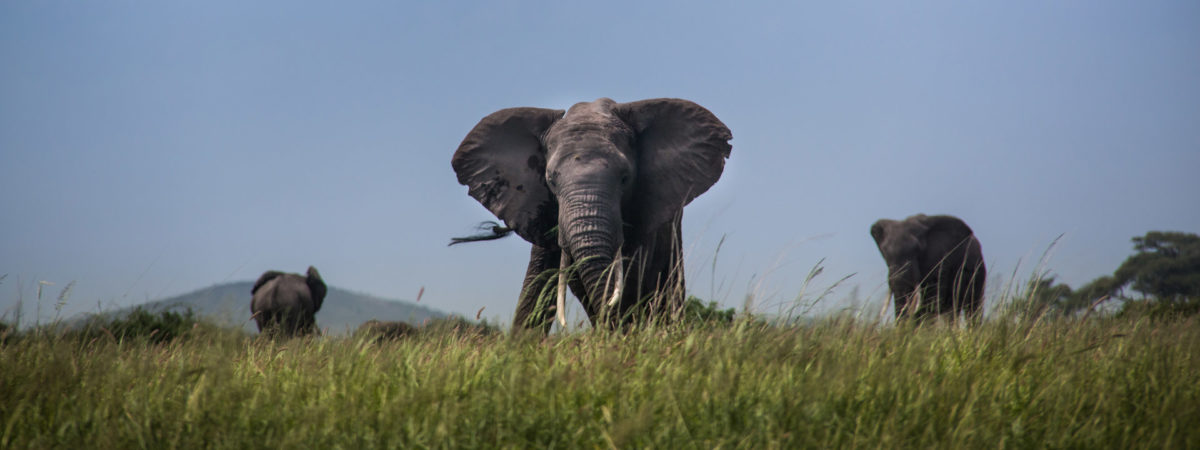
‘War on Ivory’ is the first article in Bee-Elle’s Turn to Dust series for Conjour.
By Bee-Elle
The helicopter is full of poachers.
The poaching crisis has been deeply covered and widely reported, yet the crisis continues, seemingly unabated. Through well-funded operations, combined with the falling elephant numbers, it would seem that the poachers are winning.

Sweetness/Follow: Bee-Elle Photography, All Rights Reserved.
The ivory trade takes the lives of thousands of African elephants every year at the widely reported rate of 1 every 15 minutes: four in an hour, 96 in a day, 35,000 in a year.
With 415,000 African elephants remaining, if all else is constant, in 11 years there’ll be no more left on the planet.
The statistics are harrowing, yet it’s no surprise that market forces can push the population of a species to the brink of extinction. The illegal wildlife trade is a robust and well-oiled mechanism that seldom buckles, with intricately weaved links throughout the black market and strong cooperation with intelligent criminal syndicates. The trade is lucrative for those who are a part and carries substantial worth: approximately USD$20 billion, as estimated by INTERPOL.
Like the international drug trade, which is similar in size, it is driven by highly competent criminal cartels; like a multi-billion dollar corporation, they’re adaptive to any and every move. They keep the machine’s cogs turning as it rapidly pushes species to critically low numbers. The mules of the trade are sometimes caught: the poachers wielding their machetes on the savannah, the guards who man cargo holds at Mombasa or Dar es Salaam ports. Yet as long as the criminals at the top of the pyramid and corrupt government and police officials are operating, ivory will surely flow.

Unguarded/Torrent: Bee-Elle Photography, All Rights Reserved.
Large investments and falling numbers
Hundreds of millions of dollars are spent on elephant conservation per year, yet elephant numbers are still falling.
In 2010 the African Elephant Action Plan, which was drawn up to guide all 38 range states on strategies to protect the elephant, was budgeted at approximately USD$100 million for the period 2009-2012. Thereafter, National Elephant Action Plans within the respective countries were made and assumedly, implemented at some level. The collective of NGOs in the Clinton Global Initiative elephant initiative had a budget of about USD$80 million over a three-year period. The Great Elephant Census, which delivered critical findings on the actual numbers of African elephants on the continent, cost USD$8 million alone. These form only a minuscule fraction of the world’s elephant conservation efforts. What is clear is that saving the elephant has proven to be an expensive investment- however, given the continually falling numbers, the return on investment is questionable.
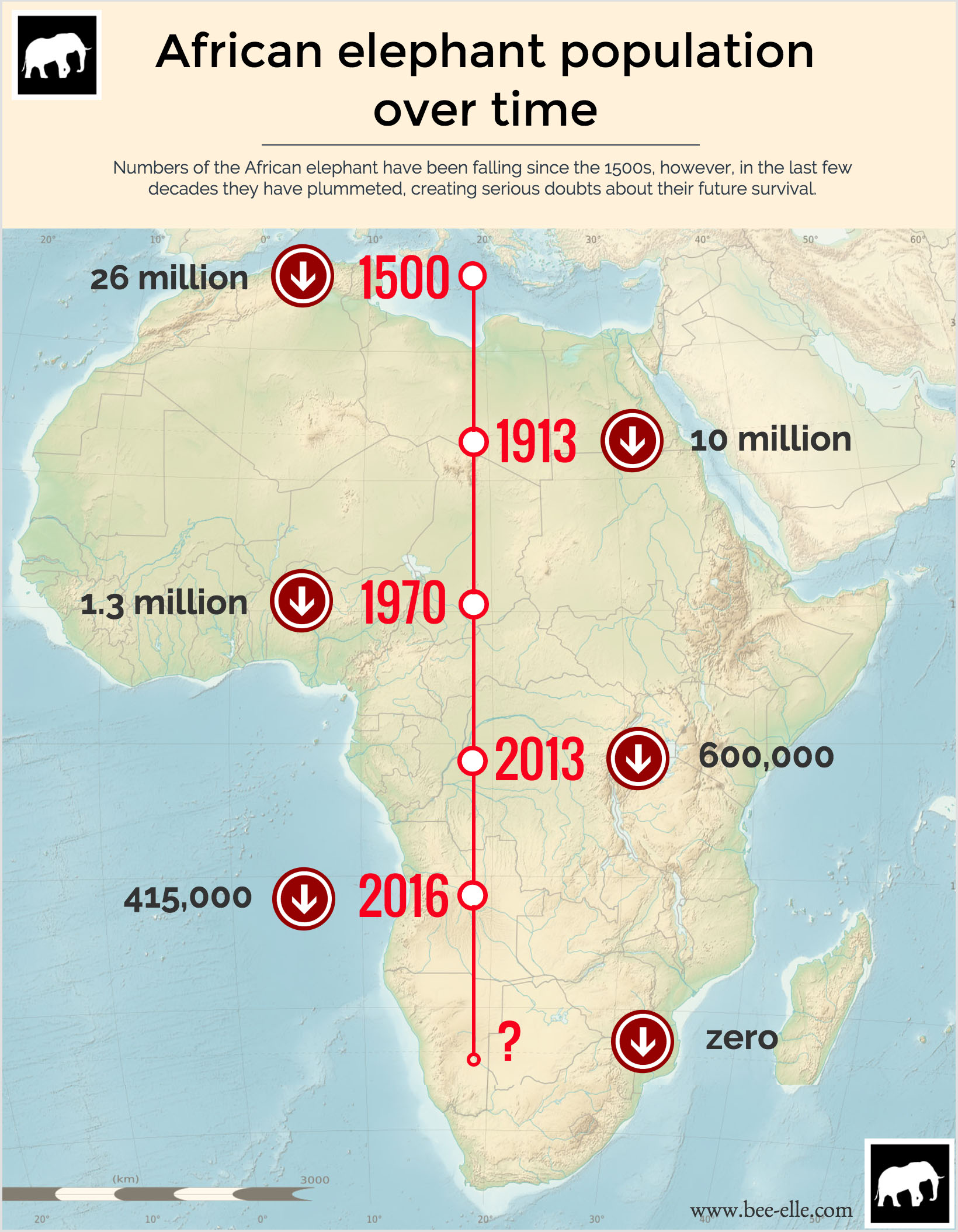
Population Infographic
As a whole, elephants are being poached at an average of 8% per year versus a birth rate of 5%. The numbers continue to rapidly plummet.
In some countries, however, elephant numbers are stable or increasing. Uganda, Kenya and Rwanda in the east, and Namibia, South Africa and Zimbabwe in the south, show stable or increasing populations. These positive results are a testament to the state’s political will and commitment to strengthening law enforcement, anti-poaching operations and community initiatives. Contrastingly, the worst affected population was in Tanzania, which saw a loss of 60% of their population in 5 years. Central Africa, which is mostly ridden by instability and conflict, is responsible for the significant loss of forest elephants. Threat levels widely differ across countries, as does population numbers and distribution ranges.
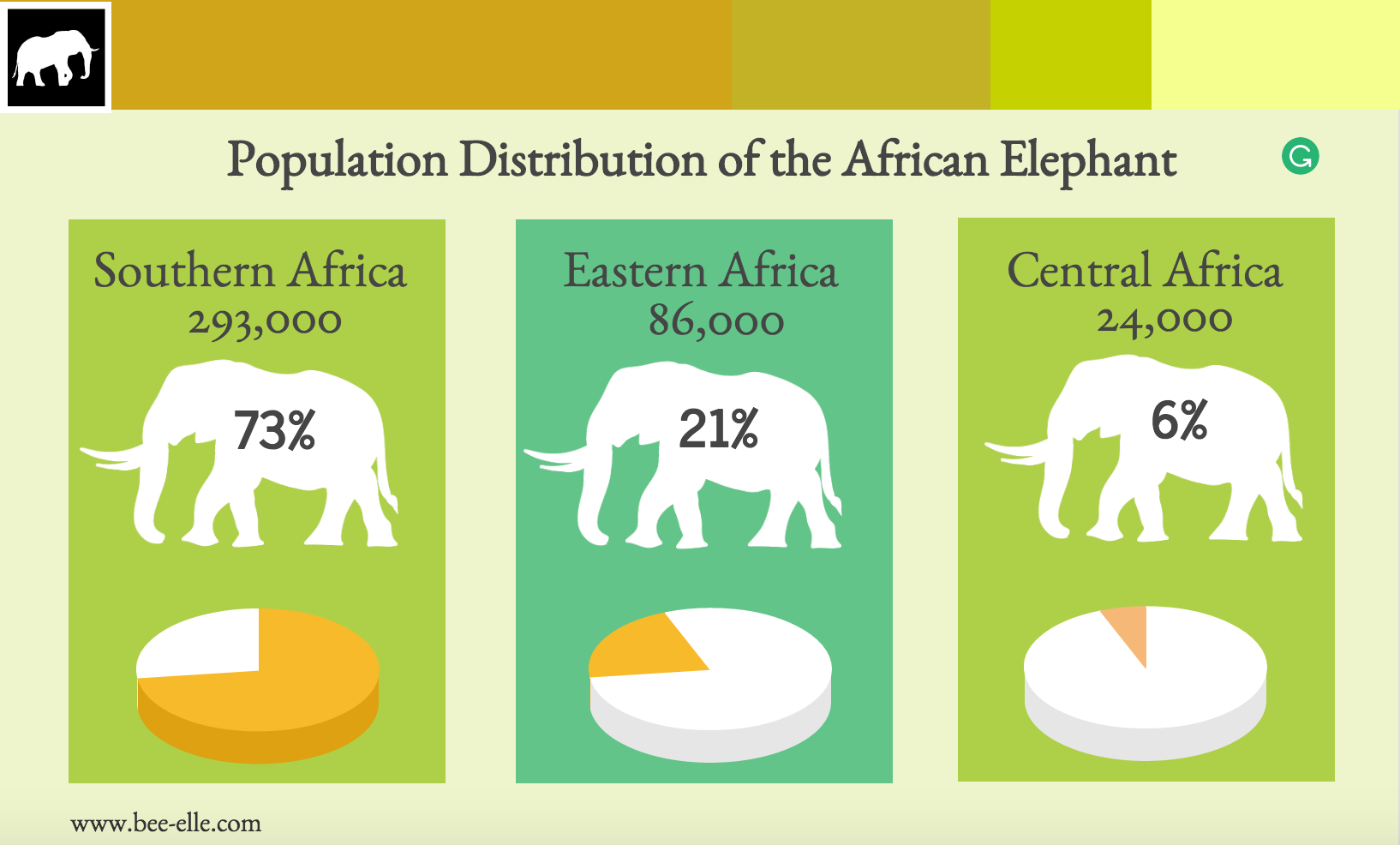
Distribution Infographic
352,000 of them are savannah elephants and the remaining 63,000 are the more elusive and, arguably, the forgotten, endangered forest elephants.
The genetic variation between savannah and forest elephants has been found to be very disparate. Mounting evidence has shown that forest elephants differ from their savannah counterparts distinctively, their ancestors having split about 5-6 million years ago. A growing body of evidence shows that they are two separate species and more scientists are lobbying for them to be classified as such. If it is, the forest elephant would easily be classified as endangered. Between 2002-2013, they were being poached at a rate of approximately 60 per day.
The numbers as a whole are following a steep decline, and the extinction of the elephant is imminent. Despite all the efforts, the trends in killing seem not to have changed.
Policy changes by those who can make the biggest difference
Changes in political commitment have been made however, notably, from the three largest domestic ivory markets: in 2016, the U.S., who are second to China for ivory trafficking, banned all commercial trades; and more recently, China and Hong Kong pledged to ban their domestic trades by 2017 and 2021 respectively. This comes in the wake of an IUCN motion, Motion 007, which was passed in September to call on all countries to close all domestic trading.
It was a clear sign that the world held a unified stance- especially from China, the main driver of demand. This ban represents a marked display of political will from China and is the best move that the international community could have hoped for. If there’s full implementation of this policy, this would make a world of difference for the elephants – literally.
The world will no doubt hold them accountable for this promise, as will China’s residents and citizens. With 34 official ivory manufacturers and 130 licensed dealers in China, this number is now set to change as early as March. China’s recent ban must be implemented in measured and scheduled steps to ensure the livelihoods of ivory carvers, manufacturers and dealers can slowly phase out. Hong Kong, who has a separate governance structure from China, has elected to do this over a longer period of time. Decommercialisation of any trade has to be executed with strong government support for alternative livelihoods to ensure there is no significant detriment to those whose businesses will be closed down. Whether this happens remains to be seen, but this much is clear: China’s recent move is the best that we could have hoped for, and may ultimately give elephants a chance for survival.
International agreements and what wasn’t agreed upon
While these pledges paint a promising picture, the most recent CITES Conference of Parties did not arrive with as positive a result. Despite intensive bidding from many states, through the EU’s opposition, who form a majority voting bloc, it was determined that the African Elephant would not be placed in an Appendix I classification. Such a classification would mean the species is endangered and would be afforded the highest protections from all trade in ivory. Elephants reportedly did not meet the eligibility criteria for this status, due to the large and increasing numbers of elephants in Southern Africa. This, however, does not take into consideration the importance of wide distribution ranges, movement patterns and genetic variability, which are all critical for species survival.
The lack of an Appendix I classification means that there is an opening for some trades, in some circumstances, to continue. As long as this opportunity exists, there’s always the possibility that ivory can exchange hands, which will lead to the deaths of many more elephants.
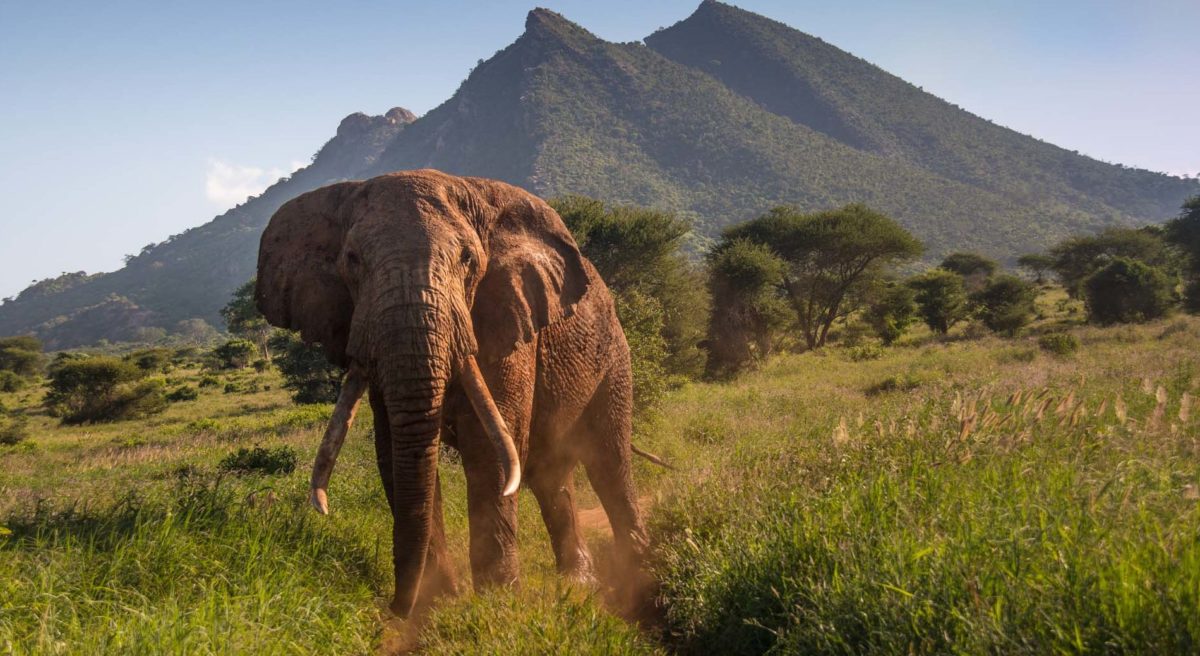
King: Bee-Elle Photography, All Rights Reserved.
The results drew overwhelming criticism from the international community. Perhaps the most disappointing was that the world’s convention seemed to have failed in showing vision and leadership in protecting a species.
The limitations of CITES must be noted, however, and that even if an endangered status was applied to the African elephant, it may not have made an overwhelmingly large difference. CITES provides a framework to regulate the trade of wildlife products and to ensure they don’t threaten the survival of wildlife; and treaties are ratified when the majority of member states come to an agreement.
This exists with the assumption that countries will cooperate. Practically, it’s designed to provide guidance for domestic legislation, although a country’s participation is voluntary, and if a country opposes any agreements, they do not necessarily have to comply. There is no official body to ensure states enforce these laws either, creating difficulties in monitoring compliance.
Change from within: domestic leadership
The ultimate and most sustainable form of change, therefore, needs to come from governments. Strengthened governance, transparent and free from corruption, better law enforcement and effective community initiatives can significantly improve the situation. Sharing intelligence across borders for strengthened cooperation and more collaborative partnerships between and across all international organisations is equally important.
The African Elephant Coalition, which consists of 29 African countries, has vehemently opposed the ivory trade in every public representation. Yet perhaps the most significant changes that need to happen are not made public- they are the changes that remain behind closed doors, manifesting through small shifts in policy and attitudes inside cabinets, and the will and commitment to do what it takes to save this iconic African species.
There’s no clear path ahead – there never was – but a more coordinated, cohesive and powerful effort from the world is needed to ensure the elephant will still exist in a couple of decade’s time. We need the kind of strategy and operations needed to fight war or terrorism. If we don’t deploy strategies at this level, the poachers will win. The countdown continues.
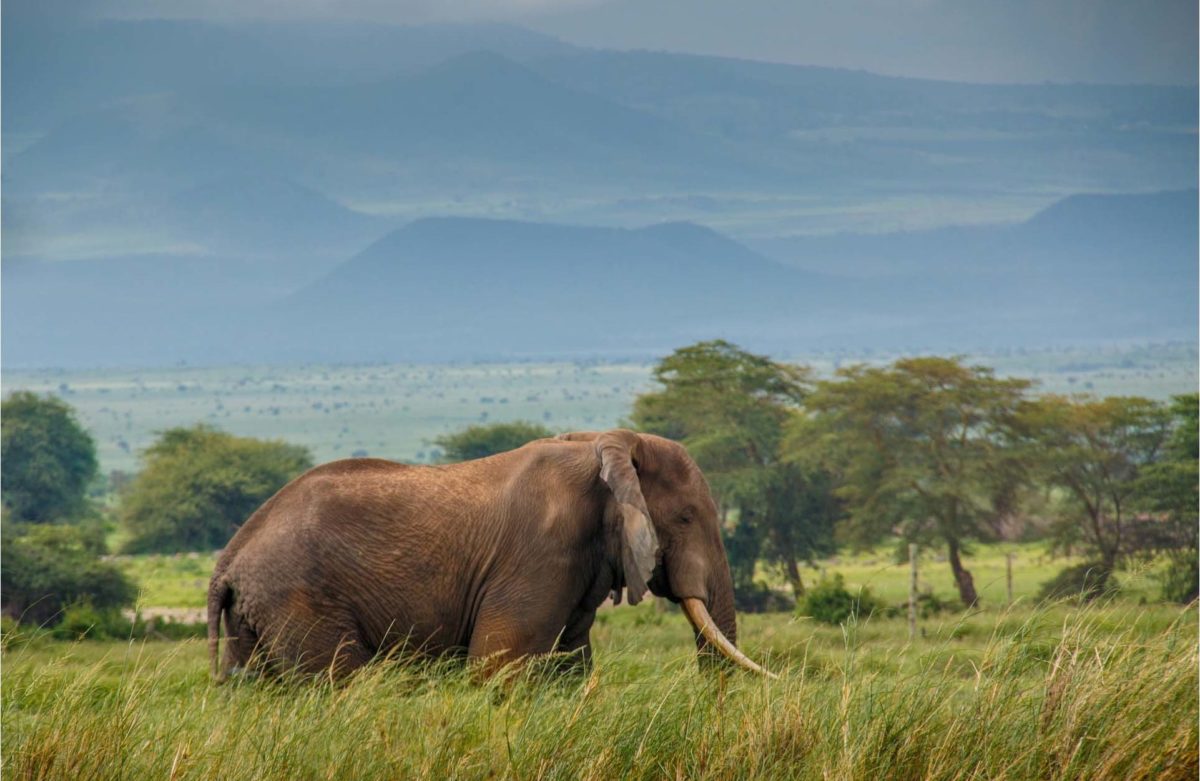
Harmony: Bee-Elle Photography, All Rights Reserved.
You can see more of Bee-Elle’s breathtaking photography on her website here. Bee-Elle arranges wildlife safaris and cultural photo tours to Kenya at thewildsavannah.com. Her fine art prints are also available for sale at bee-elle.com where a portion of all proceeds are donated to the Elephant Crisis Fund of Save The Elephants.
You may like

Blakiston’s Fish Owl

Kakapo

A vote to focus attention on Australia’s amazing animals, and their alarming decline

Mexican Grey Wolf

Penguin run undergoes UK sport commentary

Penguin run undergoes UK sport commentary

Seven Worlds, One Planet – Extended BBC Trailer

Thunberg: We will never forgive you

Bilbies Released Back into the Wild in 2018



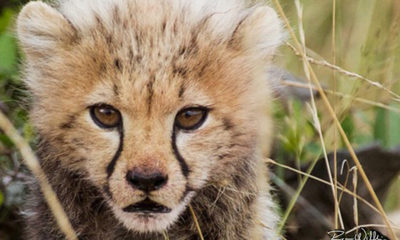

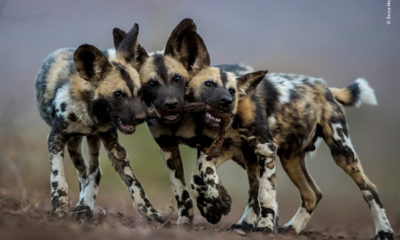

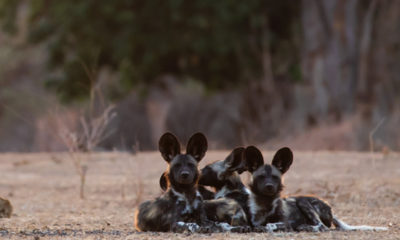



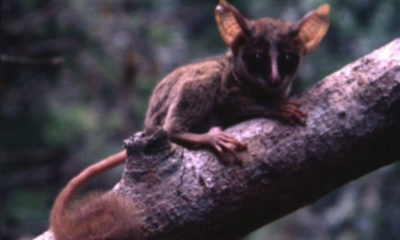



You must be logged in to post a comment Login